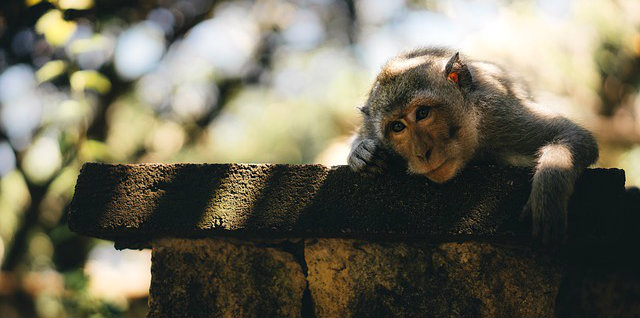 Reading Time: 5 minutes
Reading Time: 5 minutesIn 2000, I ventured onto a then-new website called “Netflix.” I can still remember how exciting it was to see the familiar red DVD mailer when I opened my mailbox.
Then in 2007, Netflix launched a streaming service. As an early adopter, I distinctly remember how crummy the the streaming service was at first. I don’t think I was able to finish a movie for the first year. Service was that atrocious.
Oh, how times have changed.
In the five years ending in 2015, Netflix weathered many storms, but its stock grew 574%, reaching an all-time high. Today, Netflix accounts for a mind-boggling 37% of all Internet traffic. By comparison, YouTube generates just 18% of total Internet traffic.
So how does a mail-order company transform itself into a multi-billion-dollar tech behemoth that dominates the Internet?
Enter the Monkey
Netflix has a secret weapon. It’s a piece of software called Chaos Monkey. Without delving too deep into the technical details, Chaos Monkey is software that randomly and purposefully messes up stuff in the Netflix data centers.
When Chaos Monkey causes failures, the Netflix engineers have to respond to each incident. Each failure is seen as an opportunity to learn. How did this failure occur? What can be done to prevent it from happening again?
By continually inducing failures in a blameless environment, and then methodically figuring out how to prevent the same failure from repeating, the Netflix team continually makes their systems harder to break.

Antifragility
What kind of weirdo creates an evil monkey that goes around breaking things? Most people and organizations do their utmost to avoid failure.
To understand Chaos Monkey, you have to understand the concept of antifragility. Antifragility is a concept explored by philosopher Nassim Taleb in his books The Black Swan: The Impact of the Highly Improbable and Antifragile: Things That Gain From Disorder.
The Netflix team that developed Chaos Monkey embraced the central ideas in Taleb’s writings: failure is a given; you can’t avoid it; but you can learn from it to get better.
But wait, doesn’t that sound a lot like resiliency? Yes, but there is an important difference. As Taleb explains, “Antifragility is beyond resilience or robustness. The resilient resists shocks and stays the same; the antifragile gets better.”
Embrace Chaos
At this point you might be wondering how to apply antifragility in your own lives. Truth be told, most people don’t need to do anything special to introduce new and exciting failure states. It’s better (and simpler) to deal with the failures you already experience than to make up new ones.
But embracing failure in your life is harder than it sounds. After all, our culture is obsessed with success. Our social status rises and falls with our successes and failures. Doesn’t failure make you a loser?
Not exactly. Repeating failures over and over is what makes you a loser. Over time, repeated failures make your whole life seem as brittle as glass. The trick to antifragility is to ask yourself two questions when failure happens:
- How could I have detected this sooner?
- What can I do to prevent it from happening again?
Let’s use my waistline as a case study. Like everyone, I get pudgy sometimes. In the past, my waistline would zig and zag like Charlie Brown’s shirt. One year, I didn’t even realize I had a problem until my mother-in-law gave me a pair of Dockers with an elastic waistband. True story.
My problem was awareness. If you’re not even aware that you’re blimping out, there is no motivation to put corrective measures into place. By the time you figure it out, the damage has already been done.
What you need is a system for detecting when you’re getting pudgy before things get out of hand. My system is to keep a photo diary of sorts. Every three months, I strip to my shorts and take front and back selfies with my arms and legs star-fished out. I compare the current set to the previous three sets to see how my body composition is trending.
Being able to visualize your body changing is incredibly powerful and motivating. When I can see myself leaning out, I get a powerful positive feedback loop. When I’m getting too chubby, I’m able to catch it before my stomach starts to hang over my belt.
I started doing this in 2007 and I’ve been able to maintain the same waist size ever since, which is quite a feat for a middle-aged dude with two kids and a weakness for donuts.
But remember that you can’t achieve antifragility by just detecting failures. You also need to prevent them from happening again.

The Secret of Making Chaos Monkey Work for You
Spoiler alert: I’m not about to drop a diet secret or magical workout routine on you. Sorry to disappoint, but the diet and fitness gurus are a primary cause of failure precisely because they relieve you of personal responsibility.
Allow me to let you in on a secret that is much more valuable than a diet tip. Antifragility happens when you take personal ownership of your failures with a blameless mindset.
Soichiro Honda said that “success can only be achieved through repeated failure and introspection.” If you use failure as an opportunity for introspection, you don’t let yourself off the hook by blaming the diet, your trainer, or your gym. Instead, you learn about yourself.
As your self-awareness grows, you will finally be able to figure out what works for you, instead of figuring out who to blame.








